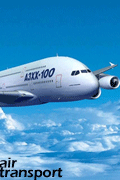Friday, May 2, 2008
WASHINGTON, DC - Washington state's first first-ever high occupancy toll (HOT) lanes on SR 167 will give drivers more choices and cut congestion in the Seattle area, Acting Federal Highway Administrator Jim Ray announced today.
"Traffic jams don't need to be a fact of life," Ray said. "For a small price, HOT lanes give drivers more options to get home to their families and to work on time."
Today, SR 167 experiences significant congestion during both the morning and evening peak periods. The road carries approximately 120,000 vehicles a day and runs parallel to I-5 between Tacoma and Seattle.
The four-year pilot project on lanes between Renton and Auburn in King County will allow solo drivers to pay a toll to use the HOV lanes when there is space available beginning May 3. At the same time, space will free up in the general purpose lanes for all drivers, keeping transit and carpools reliable. The price of the toll will rise and fall according to traffic levels. Electronic tolling will allow drivers to pay the toll without stopping.
Ray added that the U.S. Department of Transportation's plan to tackle traffic congestion and freight bottlenecks promotes HOT lanes as one of the innovative measures to improve mobility for people and commerce. "We are focused on reining in congestion because it is one of the single largest threats to our economic prosperity and quality of life."
The Federal Highway Washington Administration provided $5.13 million for the project.
"Traffic jams don't need to be a fact of life," Ray said. "For a small price, HOT lanes give drivers more options to get home to their families and to work on time."
Today, SR 167 experiences significant congestion during both the morning and evening peak periods. The road carries approximately 120,000 vehicles a day and runs parallel to I-5 between Tacoma and Seattle.
The four-year pilot project on lanes between Renton and Auburn in King County will allow solo drivers to pay a toll to use the HOV lanes when there is space available beginning May 3. At the same time, space will free up in the general purpose lanes for all drivers, keeping transit and carpools reliable. The price of the toll will rise and fall according to traffic levels. Electronic tolling will allow drivers to pay the toll without stopping.
Ray added that the U.S. Department of Transportation's plan to tackle traffic congestion and freight bottlenecks promotes HOT lanes as one of the innovative measures to improve mobility for people and commerce. "We are focused on reining in congestion because it is one of the single largest threats to our economic prosperity and quality of life."
The Federal Highway Washington Administration provided $5.13 million for the project.
posted by transport blogs
@ 9:07 PM
permanent link | Post a Comment
|
![]()








